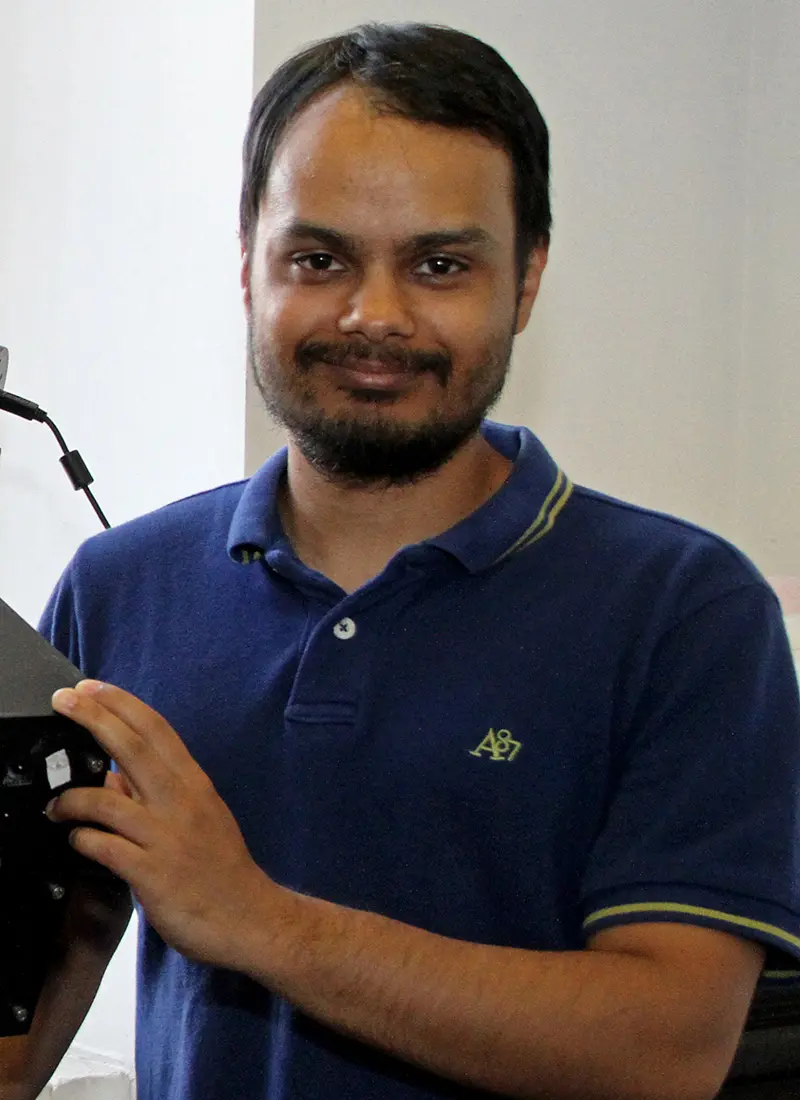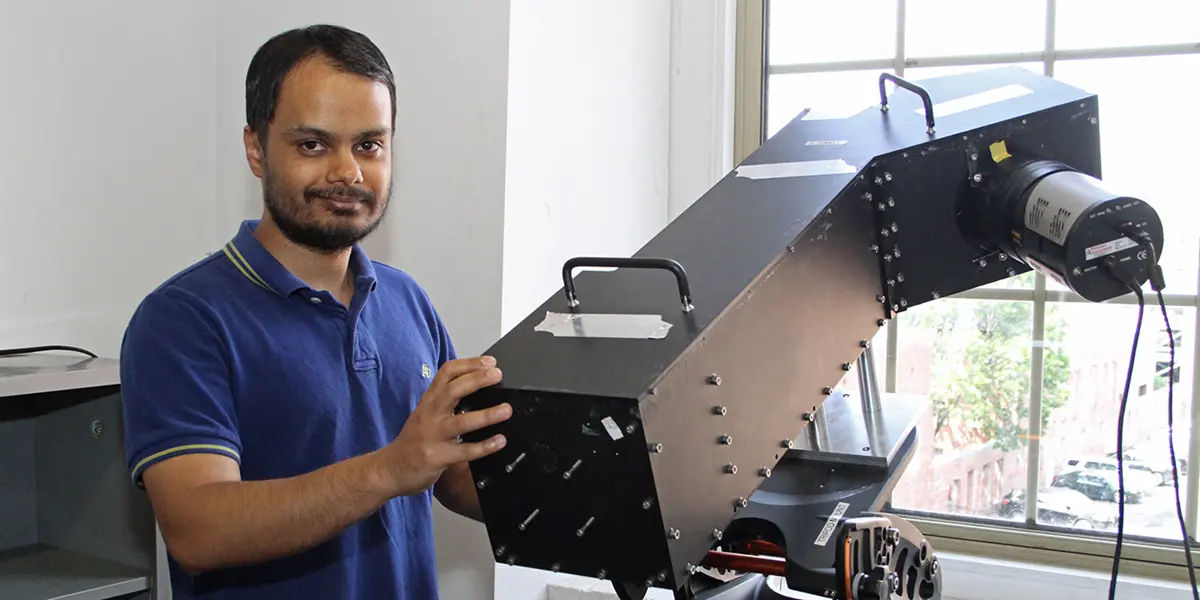Saurav Aryal doesn’t remember much about the partial solar eclipse he witnessed as a young boy near his home in Katmandu, Nepal.
But the 2017 total eclipse that will cut a path across the United States promises to be more memorable for Aryal, a Ph.D. student and research assistant at the Lowell Center for Space Science and Technology. This time around, he’ll be conducting an experiment to learn about the effects of possible disturbances in the Earth’s upper atmosphere. The quick changes caused by the moon’s shadow will provide unique conditions for research.
“I’ve always been interested in solar eclipses. This is a great opportunity. We’ll have nighttime conditions for a really short time,” says Aryal, who will be traveling to Carbondale, Ill., with fellow graduate student and researcher George Geddes for prime viewing of the phenomenon. Carbondale, home to Southern Illinois University (SIU), is the closest city to the spot where the total eclipse will last the longest – about 2 minutes, 40 seconds. The two will also participate in the Crossroads Eclipse 2017 Research Workshop at SIU.
Before, during and after the eclipse, Aryal will be using a custom-built instrument, called the High Throughput and Multi-slit Imaging Spectrograph, or HiT&MIS, to capture and record images of the upper atmosphere. The data will be used to study the potential effects of atmospheric disturbances on things like satellites and GPS systems.
Aryal, who lives in Lowell, earned a bachelor’s degree in physics from Winona State University and a master’s in physics from Central Michigan University. He also studied at Katmandu University.


